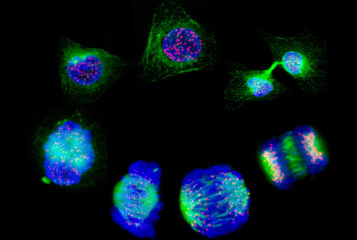The first births from genome edited human embryos have been announced by a Chinese researcher amid widespread condemnation, and fears over safety.
Dr He Jiankui revealed the birth of the baby twin girls ahead of a major genome editing conference in Hong Kong. Dr He and his colleagues used CRISPR/Cas9 genome editing in human embryos to remove a gene called CCR5, with the aim of producing 'HIV-resistant infants'.
The revelation has met with outcry from the scientific community. 'If true, the report is very concerning,' said Dr Kathy Niakan of the Francis Crick Institute in London. 'This would be a highly irresponsible, unethical and dangerous use of genome editing technology.
She added: 'Given the significant doubts about safety, including the potential for unintended harmful side-effects, it is simply far too premature to attempt this.'
Professor Darren Griffin at the University of Kent added: 'Not good, not good, not good. In a world where scientists, by and large, try to be aware of ethical and social issues surrounding the work that we do, this report takes us back to the Stone Age.'
He urged: 'An international treaty on embryo research is now an absolute priority to prevent this happening again.'
Sarah Norcross, director of the Progress Educational Trust (which publishes BioNews) called the news 'shocking'.
'First, we would have expected to see a lot more research into the safety and efficacy of genome editing in human embryos, before attempting to achieve a pregnancy,' she said.
'Second, we would have expected the first such application of genome editing to be on an embryo which had a serious genetic condition with life-limiting consequences. Given our current level of knowledge, editing the genome of healthy embryos to attempt to confer resistance to HIV is completely unethical.'
Dr He and his colleagues recruited couples where the male partner had HIV and the female partner was HIV-negative. He told the Associated Press that he had genetically altered embryos for seven couples in fertility treatment, with one pregnancy so far.
The gene CCR5 codes for a protein that allows HIV to enter and infect a cell. Individuals who are HIV-resistant have been found to have mutations in this gene.
However, as the father of the twins (and all the men in the trial) had viral levels suppressed by standard antiretroviral therapy for HIV 'there is zero risk of onward viral transmission' to his partner or children, according to Professor Sarah Fidler at Imperial College London. She said that the father having HIV 'would not be considered an indication to look for genetic reasons to prevent transmission of HIV to the infants'.
The genome editing took place during IVF treatment. First, the sperm were washed to remove any HIV that might be in the semen. Then the sperm and egg were introduced, along with the genome-editing components.
When the early embryos were five days old, cells were removed and checked through DNA sequencing to see if the genome editing had worked. The couples then had the choice of whether to use edited or unedited embryos for implantation.
Dr He told AP that 16 of 22 embryos were edited and 11 embryos were used in six implant attempts to achieve the twin pregnancy.
One of the twins has both copies of the CCR5 gene edited, while the other twin has only one edited copy. Experts said that this means that twin will not be protected from HIV infection, but rather might have slower disease progression if they did contract the virus (see this week's Comment).
In a YouTube video, released on Sunday, Dr He explained the rationale for the study and said he was willing to take the criticism on behalf of the families. He called 'gene surgery' a 'technology for healing'.
Dr He recalled the 'media hyped panic' over the birth of the world's first IVF baby, Louise Brown, 40-years ago. 'Gene surgery is another IVF advancement and is only meant to help a small number of families,' he said.
Dr He's institution, the Southern University of Science and Technology in Shenzhen, has disavowed knowledge of twins' birth. It said: 'The university was deeply shocked by this event and has taken immediate action to reach Dr Jiankui He for clarification.' It added that it would be calling international experts to form an independent committee to investigate.
The science and regulation of genome editing will be discussed at this coming Wednesday's Progress Educational Trust Annual Conference 'Make Do or Amend: Should We Update UK Fertility and Embryo Law?'.
The conference is taking place in London on Wednesday 5 December 2018. There are still a handful of places available at the conference, but these are going fast. See the agenda and book your tickets now, by clicking here.
Sources and References
-
Chinese researcher claims first gene-edited babies
-
Chinese scientists are creating CRISPR babies
-
Southern University of Science and Technology Statement On the Genetic Editing of Human Embryos Conducted by Dr. Jiankui HE
-
Hospital in China denies links to world’s first gene-edited babies
-
Safety and validity evaluation of HIV immune gene CCR5 gene editing in human embryos
-
About Lulu and Nana: Twin Girls Born Healthy After Gene Surgery As Single-Cell Embryos






Leave a Reply
You must be logged in to post a comment.